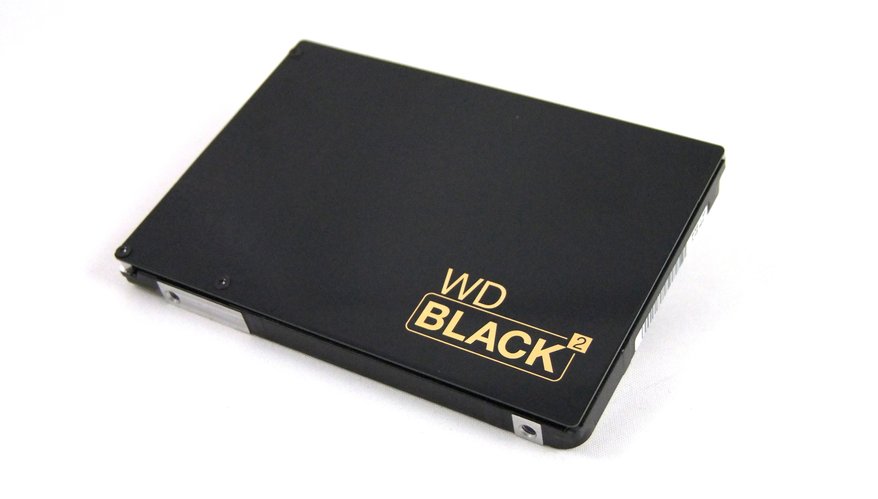WD Black2 Dual Drive: part SSD, part HDD, 1.1 Terabytes of space

The big problem with solid state drives, even with prices dropping on an almost daily basis, is that getting the storage capacity you really need is often prohibitively expensive. Western Digital are looking to solve the problem with the WD Black2 Dual Drive by pairing a 120GB SSD with a 1TB HDD in a single 2.5-inch package. Basically it looks like any other 120GB SSD, but comes with another 1,000GB of data storage behind it. It's an interesting upgrade option for any system with limited storage options, like a laptop or a small form-factor PC. It means you don't have to make a compromise between quicker performance with an SSD and the increased capacity, but slower speed, of a standard hard drive.
Details of what exactly WD are using to pack out the SSD part of the drive seems to be a bit of a guarded secret - all they could tell me was that it was built from 20nm MLC NAND Flash memory, but weren't forthcoming about which memory controller they were using. Sadly they've have glued down the SSD part, so if I want it to function ever again I'm not going to be able to pull it apart and see whose silicon is sitting inside. According to WD it sits in the middle of most performance tests, so it's not going to worry the likes of Samsung when it comes to straight SSD speeds.
Unlike most other combo drives the drives remain separate during use. There's no thought given to using the SSD parts as a cache to speed up the spinning platter performance, which means there are no flaky storage algorithms to worry about.
The only issue I've got for the WD Black2 Dual Drive is the price. At £250 it's around the same as a top-end 480-500GB solid state drive. You can pick up either a Samsung or Crucial SSD for just £261 at the moment. You'll have to really need that extra memory to make the WD worthwhile.
Keep up to date with the most important stories and the best deals, as picked by the PC Gamer team.

Dave has been gaming since the days of Zaxxon and Lady Bug on the Colecovision, and code books for the Commodore Vic 20 (Death Race 2000!). He built his first gaming PC at the tender age of 16, and finally finished bug-fixing the Cyrix-based system around a year later. When he dropped it out of the window. He first started writing for Official PlayStation Magazine and Xbox World many decades ago, then moved onto PC Format full-time, then PC Gamer, TechRadar, and T3 among others. Now he's back, writing about the nightmarish graphics card market, CPUs with more cores than sense, gaming laptops hotter than the sun, and SSDs more capacious than a Cybertruck.

